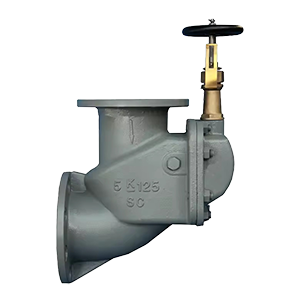In the unforgiving environment of the open sea, even the smallest component can make the difference between smooth sailing and disaster. Among these critical components, the storm valve stands out as a frontline defender against uncontrolled seawater ingress, backflow events, and system failures. Whether installed in overboard discharge systems, bilge lines, or ballast systems, storm valves ensure a vessel’s safety, operational integrity, and regulatory compliance.
1. Why Storm Valves Matter on Ships
Flooded Machinery Spaces: Seawater pushed back through bilge or cooling discharge lines can overwhelm pumps and electrical equipment, risking complete engine-room failure.
Corroded Piping and Components: Continuous saltwater ingress accelerates pitting and crevice corrosion, dramatically shortening the life of valves, fittings, and pipework.
Stability Compromise: Uncontrolled backflow into ballast or cargo tanks can upset a ship’s weight distribution, impairing trim and potentially leading to dangerous list or capsize conditions.
Operational Delays & Increased Maintenance: Even minor flooding incidents require costly cleanup, dry-docking, and part replacements—downtime that commercial operators cannot afford.
2. Key Features and Design Elements
2.1 Dual-Function MechanismNon-return feature
A swing or lift mechanism that automatically closes when flow reverses.Manual or actuated shut-off: Operators can isolate the line entirely for maintenance or in an emergency.
2.2 Corrosion-Resistant Materials
Bronze or marine-grade stainless steel bodies resist pitting and crevice corrosion in seawater.EPDM or Nitrile seals ensure reliable sealing and long service life.
2.3 Pressure and Flow Ratings
Rated for typical shipboard pump pressures (up to 6 bar or higher in high-capacity systems).Designed to minimize pressure drop during normal discharge.
3. Typical Applications
3.1 Overboard Discharge Systems
Storm valves prevent seawater from re-entering through sea chests and discharge outlets when deck scuppers are submerged, protecting internal systems from flooding.
3.2 Bilge Systems
Bilge pumps eject accumulated water from the hull; storm valves ensure bilge lines do not become pathways for seawater ingress during heavy seas.
3.3 Ballast Systems
Maintaining vessel stability relies on careful ballast pumping. Storm valves safeguard against unexpected backflow, which could upset trim and stability calculations.
4. Selecting the Right Storm Valve
Size and Connection Type: Match flange standards (e.g., DN sizes, PN10/16, JIS).
Material Compatibility: Ensure corrosion resistance for your vessel’s operating waters.
Flow Capacity: Verify Cv values to minimize head loss at design flow rates.
Actuation Method: Manual wheels for simplicity or pneumatic/electric actuators for remote control.
Maintenance Accessibility: Valves should be installed where crews can easily inspect and service them.
5. Operation and Maintenance Best Practices
Monthly functional tests: Simulate reverse-flow conditions to confirm automatic closure.
Annual hydraulic testing: Verify seat tightness under rated pressure.
Regular lubrication of stems and actuators to prevent seizure.
Visual inspections for corrosion or seal degradation, replacing EPDM/Nitrile seals as needed.
Post time: Apr-27-2025

